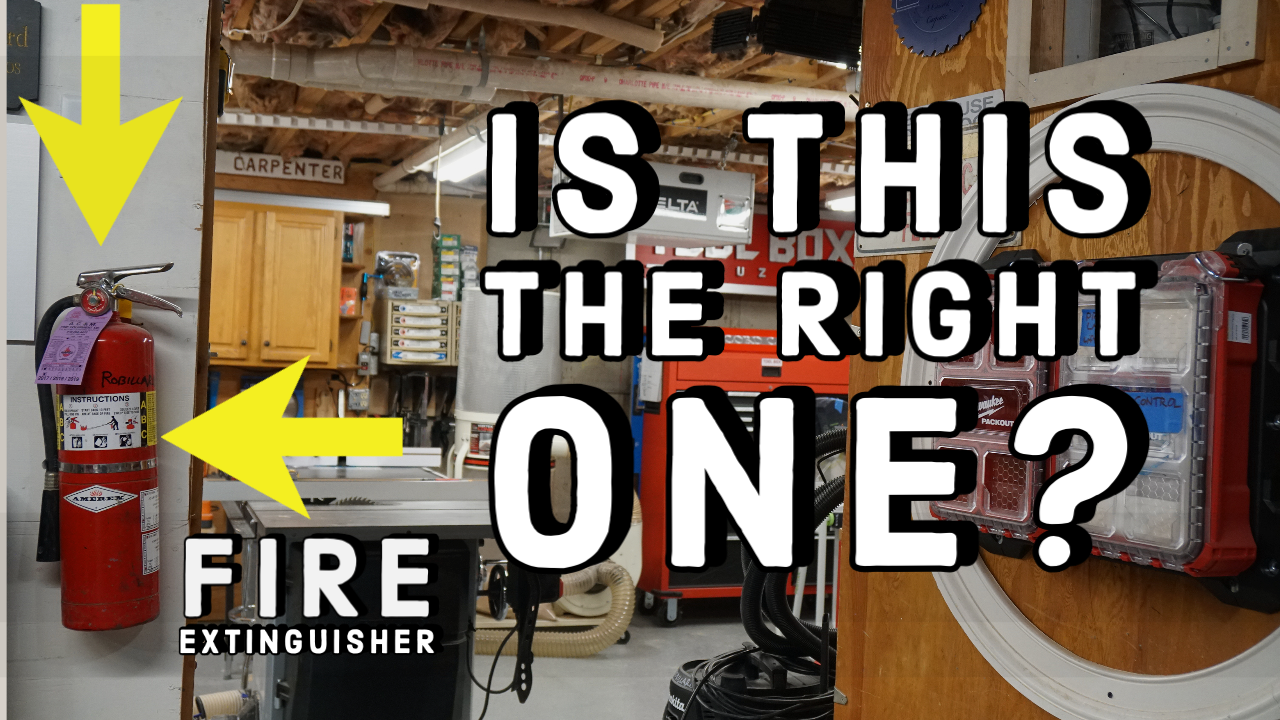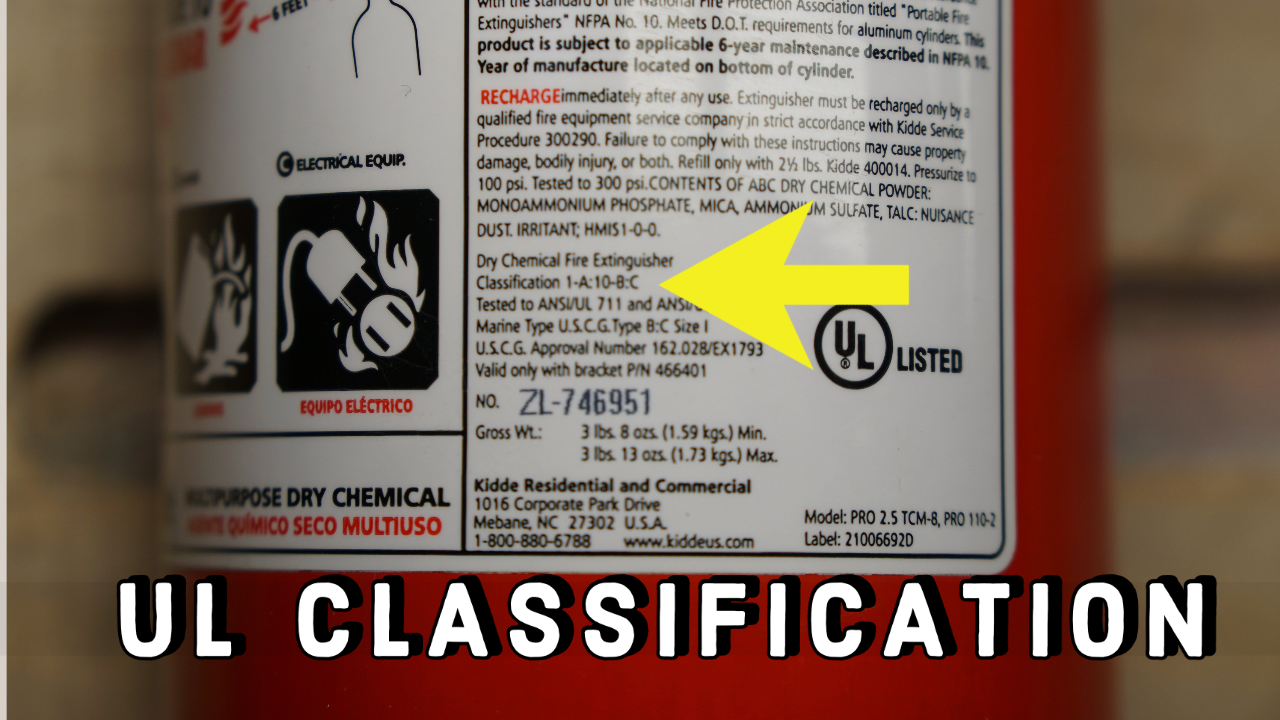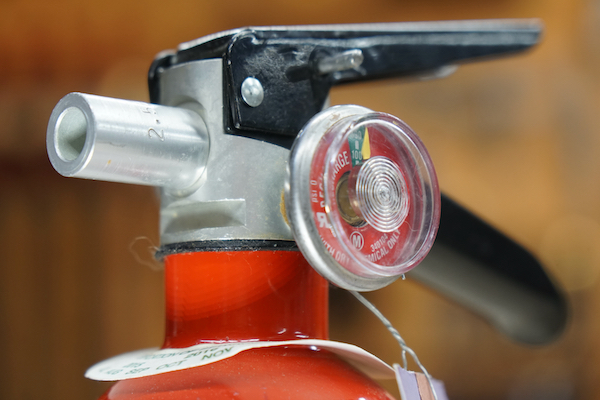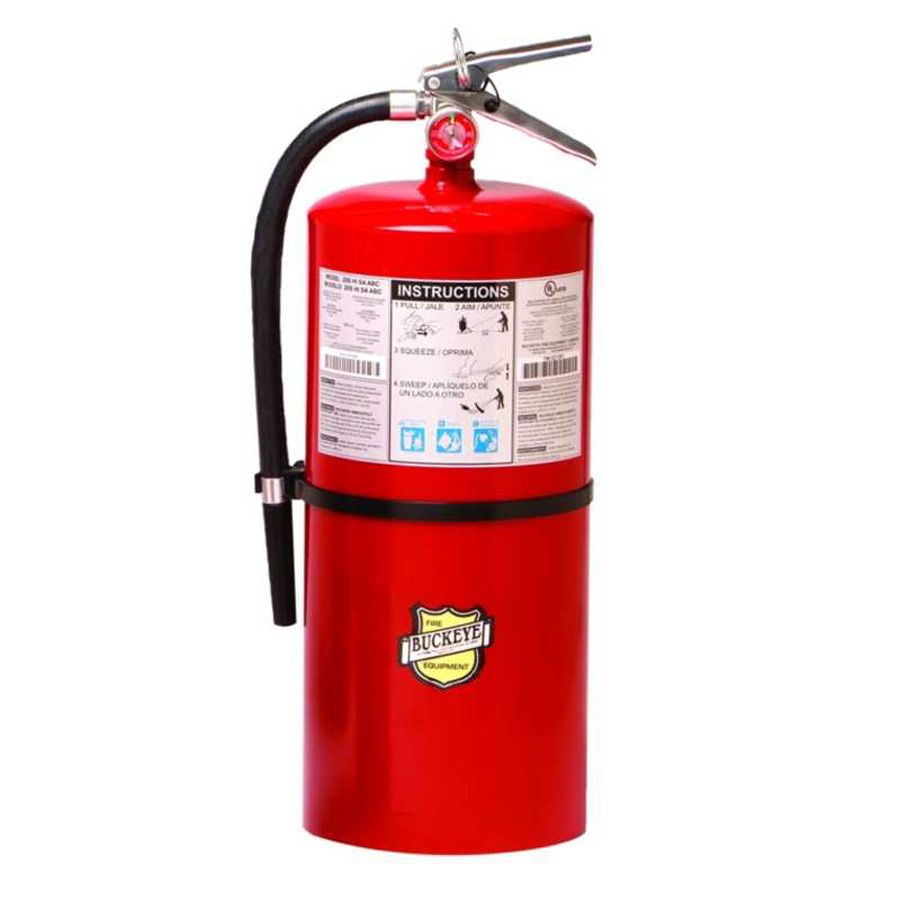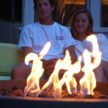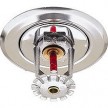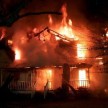Choosing A Fire Extinguisher For Your Workshop
Does Your Shop Have a GOOD Fire Extinguisher
Do you have a fire extinguisher in your shop? Is it charged, and is it large enough to put out a real fire?
Woodworking shops are inherently prone to fires for obvious reasons. They contain large quantities of fuel in the form of wood and wood products, sawdust, and flammable materials such as paints, oil finishes, adhesives, and solvents.
Many shops are full of fine sawdust which will ignite and burn far more easily than solid lumber. Add to that that we fill our shops with potential ignition sources, such as potentially faulty electrical wiring, cutting and welding operations, sparking tools, or the potential for static electrical discharges.
WorkShop Fire Extinguishers – Go Big!
Most woodworking shops have a combination of wood, solvents and other flammable liquids plus electrical machines. Because of this, a higher rated fire extinguisher is recommended.
All residential extinguishers are classified A, B, or C (or a combination of these) on the label to indicate which types of fires they are most effective on.
The main distinction among residential fire extinguishers is size, and I think the bigger the better.
Fire Extinguisher Classes
There are four classes of fire extinguishers – A, B, C and D – and each class can put out a different type of fire. All of these fire extinguishers us a dry chemical multipurpose extinguishing agent.
- Class A extinguishers will put out fires in ordinary combustibles such as wood, cardboard, and paper
- Class B extinguishers are for use on flammable liquids like solvents, grease, oil, and gasoline
- Class C extinguishers are suitable for use only on electrically energized fires
- Class D extinguishers are designed for use on flammable metals
Fire Extinguisher Classification Rating
In the fine print on the fire extinguisher label, are letters preceded by numbers — for example, 1-A:10-B:C — this is the extinguisher’s classification rating.
All Fire Extinguishers are tested by the Underwriters Laboratory for safety and performance. They are rated based on the type of fire that they will put out, and their classification is determined by the size of fire they will put out.
The UL rating is broken down into Class A and Class B:C ratings. These numerical ratings allow you to compare the relative extinguishing effectiveness of various fire extinguishers. For example, an extinguisher that is rated 4A:20B:C indicates the following:
- The A rating is a water equivalency rating. Each A is equivalent to 1 1/4 gallons of water. For example, 4A = 5 gallons of water.
- The B:C rating is equivalent to the amount of square footage that the extinguisher can cover, handled by a professional. 20 B:C = 20 square feet of coverage.
- C indicates it is suitable for use on electrically energized equipment.
The take away here is the higher the number, the greater the fire extinguisher effectiveness.
My Workshop Fire Extinguisher
This fire extinguisher fights fires common to the workshop such as paint, wood, gasoline & energized electrical equipment. This unit is easy to use and can be recharged. The label on it now says the charge, if not used, will last 6-years.
It’s important that you purchase a quality fire extinguisher for your shop. Make sure it has an easy to read pressure gauge for your shop so you know when to recharge it.
Tip – mount the extinguisher near a door, preferable near the light switch so you can always and easily check the gauge.
Purchase A Quality Rechargeable Fire Extinguisher
There’s also a difference between rechargeable extinguishers, metal valves, and disposable ones, which will have plastic valves. A rechargeable one will cost more, but refilling it once the pressure gauge shows that use or time has depleted the contents is still less expensive than buying a new disposable one.
This is a perfect example of you get what you pay for. Be safe all and go and get a fire extinguisher for your shop, and if you have one – go check that gauge!
Here’s an example of a quality fire extinguisher



